A Novel Type of Monocytic Leukemia Stem Cell Revealed by the Clinical Use of Venetoclax-Based Therapy
- PMID: 37358260
- PMCID: PMC10527971
- DOI: 10.1158/2159-8290.CD-22-1297
A Novel Type of Monocytic Leukemia Stem Cell Revealed by the Clinical Use of Venetoclax-Based Therapy
Abstract
The BCL2 inhibitor venetoclax has recently emerged as an important component of acute myeloid leukemia (AML) therapy. Notably, use of this agent has revealed a previously unrecognized form of pathogenesis characterized by monocytic disease progression. We demonstrate that this form of disease arises from a fundamentally different type of leukemia stem cell (LSC), which we designate as monocytic LSC (m-LSC), that is developmentally and clinically distinct from the more well-described primitive LSC (p-LSC). The m-LSC is distinguished by a unique immunophenotype (CD34-, CD4+, CD11b-, CD14-, CD36-), unique transcriptional state, reliance on purine metabolism, and selective sensitivity to cladribine. Critically, in some instances, m-LSC and p-LSC subtypes can co-reside in the same patient with AML and simultaneously contribute to overall tumor biology. Thus, our findings demonstrate that LSC heterogeneity has direct clinical significance and highlight the need to distinguish and target m-LSCs as a means to improve clinical outcomes with venetoclax-based regimens.
Significance: These studies identify and characterize a new type of human acute myeloid LSC that is responsible for monocytic disease progression in patients with AML treated with venetoclax-based regimens. Our studies describe the phenotype, molecular properties, and drug sensitivities of this unique LSC subclass. This article is featured in Selected Articles from This Issue, p. 1949.
©2023 American Association for Cancer Research.
Conflict of interest statement
Figures
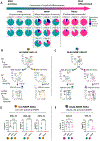
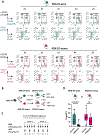
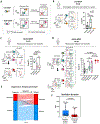
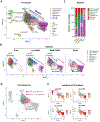
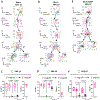
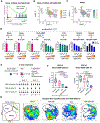
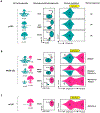
References
-
- Kreso A, Dick JE. Evolution of the cancer stem cell model. Cell stem cell. 2014;14(3):275–91. - PubMed
-
- Pollyea DA, Jordan CT. Therapeutic targeting of acute myeloid leukemia stem cells. Blood. 2017;129(12):1627–35. - PubMed
-
- Bonnet D, Dick JE. Human acute myeloid leukemia is organized as a hierarchy that originates from a primitive hematopoietic cell. Nature medicine. 1997;3(7):730–7. - PubMed
-
- Hope KJ, Jin L, Dick JE. Acute myeloid leukemia originates from a hierarchy of leukemic stem cell classes that differ in self-renewal capacity. Nat Immunol. 2004;5(7):738–43. - PubMed
Publication types
MeSH terms
Substances
Grants and funding
LinkOut - more resources
Full Text Sources
Molecular Biology Databases
Research Materials

